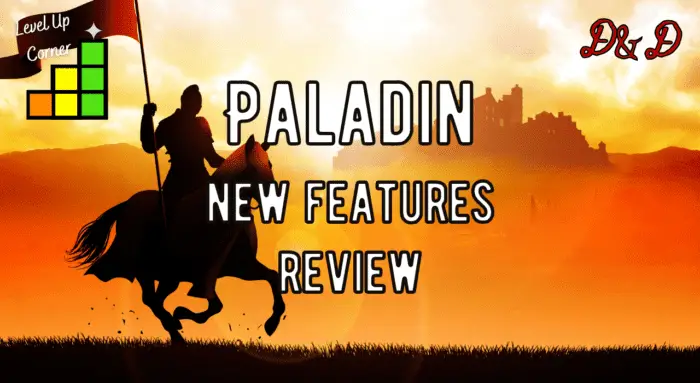Ah, the age-old question of linear vs sandbox in D&D. Which should I run? Here I am going to go over them in detail pointing out the strengths and weaknesses of both types. But as always, we need to define what we are talking about
Linear vs sandbox in D&D is how you, as a dungeon master, will run your game.
Linear is a much more structured approach, and sandbox is for an experienced group of players or the begging of a campaign.
Linear is a structured and storied approach. An adventure module is a great example of a linear game. There is a plot, stages, and a set environment for the players to be in at certain stages of the game.
Sandbox is the exact opposite. You drop the players off in a town or place that gives them many options, and all options are impactful. If you have played Fallout 3/4 or any elder scrolls game, you know what sandbox games are like. Main quest? Either
Why is sandbox better?
Here I will make a case why sandbox is better, and later I will make a case why linear is better. But on to sandbox!
Have you ever been frustrated at how players keep veering off the plot? Do your players sniff a whiff of plot and instantly kill people or run the other way? If so my friend, a sandbox game may be for you!
Sandbox games allow anything to happen. Did you start off slaying sewer rats, but ended up killing a god who owns a school of magic because…. Reasons? If so, then you may have played a sandbox game.
In sandbox games everything flows and merges so naturally, letting the dungeon master adjust to any playeritus. Sandbox games are completely immune to creative players destroying the game because improvisation is the key to making every sandbox game work!
If you are creative and able to improvise with creative players, then sandbox games are for you!
Sandbox pros
When trying to convince you how freaking awesome sandbox games are I mentioned that players cannot destroy the plot. How can players not destroy the plot? Because you use your players to create the plot!
That is right, the dungeon master in a sandbox game creates plots based on what the players do.
A great example of this is if your players didn’t finish a job or didn’t take a job. What happens because of that? Does the necromancer grow in power? Do the players now have enemies? Have they made other enemies? Make your players the sole guiding force for the plot and your players can never truly shatter the plot like here!
Sandbox cons

Plot holes. You will most likely have a lot of plot holes. But can you even get to those plot holes?
Are your players not very creative? If not, you have a serious problem. Are you not creative and able to improvise a whole dungeon on the spot? If not, then you have another serious problem. The story will not progress, and you will not have the potential to make any plot holes since there is no plot!
Sandbox games rely heavily on their player’s and dungeon master’s creativity. If either one is lacking, the game will be a bust.
Most players actually want linear games. A new player already has a tough time with the whole idea of being able to do anything. This pushes the boundaries to the max and most likely will overwhelm newer players.
If your players are not creative, the game will be a dud. Only a certain type of group can play a true sandbox game. Let’s talk about that group…
The group needed for sandbox
We talked a lot about how the dungeon master should be able to improvise and be creative, but to what extent? Does a dungeon master need to have a whole city lined up for the players at the blink of an eye?
No, that would be crazy. Instead, the dungeon master needs to have experience, a general concept of what monsters would be in the environment, and a solid understanding of their players. This way, the dungeon master can be one step ahead of them.
The players need to be experienced and creative as stated above, but how creative? Your players need only fit one criterion; do they break the game?
Do your players constantly make linear games difficult or almost impossible? Are they the type of people who can win an encounter, or complete an entire quest with one spell? How about not rolling at all? If your players can do any of these things, then sandbox games are perfectly suited for them.
Why is linear better?

Linear is awesome since it is the most played! That is right, most games are played in a linear fashion instead of a sandbox fashion. Why is that? It is simple my friend because we like structure.
Players come to play a game, relax
Linear also makes the dungeon master’s life easier since they don’t have to be constantly on edge and glancing at the monsters available, pondering what to next.
This narrative style also lets you be 1 campaign ahead of the players, which makes your life just so much easier.
Linear pros
As stated, this type of playstyle is more prevalent than sandbox games. That alone is a great pro, but why does this happen?
Dungeon masters have more authority when they are not panicking. If the person leading the table looks like they have taken a dose of some illegal substance, you may be concerned. If your dungeon master instead looks calm, collected, and shows emotion when you break the game, that is far more fun!
Aside from the game being more of what we expect, linear games also offer guidance. Even experienced and creative players can be at their wits end trying to figure out what to do next. Linear games solve that problem and give an answer.
Most linear games are more narratively cohesive. Instead of taking a bunch of disjointed plots and stringing them together, the dungeon master has taken the time to weave an intricate web. Everything makes sense, is linked, and well thought out.
Linear cons
Players breaking your game. I currently am running a module with my group. If you want to get a story, some resources, and an update on my current Dungeons and Dragons campaign then sign up in the newsletter for free stuff! Not to spoil anything, my group didn’t exactly complete the first quest at level one.
In fact, not only did they screw it up, they killed a player and killed major NPCs so that the module is now slightly broken. If I just followed the module from here on out, my players would never be able to finish. So while things may be planned out, my players still are making me adapt far more often than I should.
Railroading is also a huge con. If you want to see why I say true railroading is most of the time bad, read about it here. In short, players can be forced to do something they didn’t think of or don’t want to for plots sake. This can really cause a disconnect with your players that will ruin your entire game.
The usual campaign
I stated how Linear games are the usual types of campaigns, and that makes sense. Most stories do not just start……. Now we are done, yey! If that sentence was confusing, that is because we are not used to thinking that way. Most stories in our society do not start off with a hook and then let us fill in the blank. We want a full story dang it! Not some work that we can make ourselves….
Making a mix of the two

Sometimes we start as one game type, thinking that this will work out and become a great campaign! Only to learn later on that our players will not fit into this narrative style. It is unfortunate, but we can make lemonade out of lemons.
If your players are having issues, you can transition the narrative style, or end up mixing the two.
How would you do so? Let me enlighten you, my friend.
Linear to sandbox
A great example of this transition can be found in critical roles campaign two. The greatest example is when the party is in their first big city with town criers, guards, thieves guilds, etc. The party was given a choice to help the good guys or make some scummy deals. The party sort of did that, but in the
If you watch Matthew Mercer’s (the dungeon master) face, you will be able to pinpoint a few times where he is thinking, ‘wait what…..okay…..” and adapts spectacularly. The group then leaves the city and is given many options on what to do.
The players are now driving the story. The players think on what they want to do, act on it, and Mercer just rolls with them. This is a beautiful example of how a structured linear game with a plan can turn into a sandbox game.
What tops it all off is that there are other elements brought into the story, and he will use them. Past connections and stolen items will continually have an impact on the story.
Sandbox to linear
Sandbox to linear is a much rarer occurrence. Most dungeon masters pick the sandbox-style because they believe their party would fit this narrative style better. In addition, this is not the normal narrative style. Therefore, players don’t start in the wrong narrative type as often.
Fortunately for you all, I love starting my games as sandbox games, because I am weird.
Your players have screwed up royally. They have angered almost every single possible person, not done any jobs successfully, and have somehow broken the game in a sandbox-style game. Your game needs to be saved and fast.
I have been in this situation and didn’t expect to ever be in that situation again. I was wrong. A different campaign did this exact same thing.
It took me a lot of thought to solve this problem, but creating a simple, easy, and structured path is what the players needed. If there was more structure, the players would be forced to have some allies and thus make the game and their lives a lot easier.
What is right for your game?
You should have a few ideas on what game is right for your group based on the examples I put forth above. If your players are creative, are bored of the same old game, and break the game, put them in a sandbox. If your players
The best part is, that if you screw up and use a narrative style that doesn’t fit your game, you can transition quite easily.
From Mercer’s display of ‘oh crap, wait, you want to do something? Let’s do that!’ for linear games to a sandbox change of making an ally or organization appear and almost force the players into an alliance, (if they are willing) there are
Just take a hard look at your group, think, and you should find the answer.
Conclusion
There are two main narrative styles, and I have given you pros and cons for both. Linear vs sandbox in D&D is a choice that every dungeon master needs to make.
If when deciding linear vs sandbox in D&D you chose wrong, that is also okay. You can shift narrative styles, and still save your game.
This has been Wizo and keep rolling!




